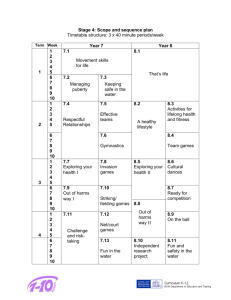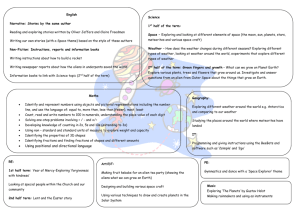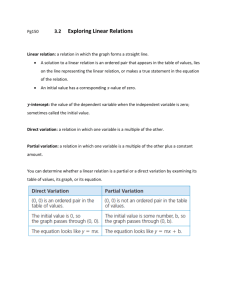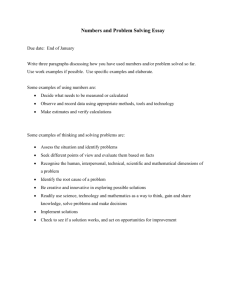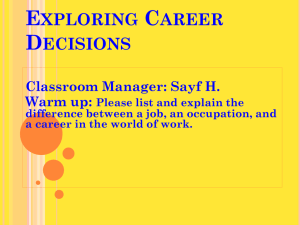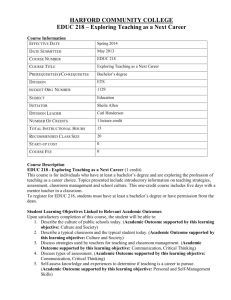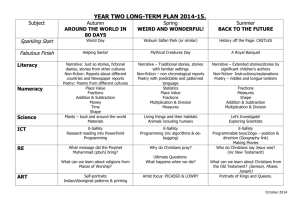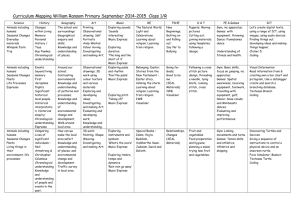ART 2140 - Wright State University
advertisement
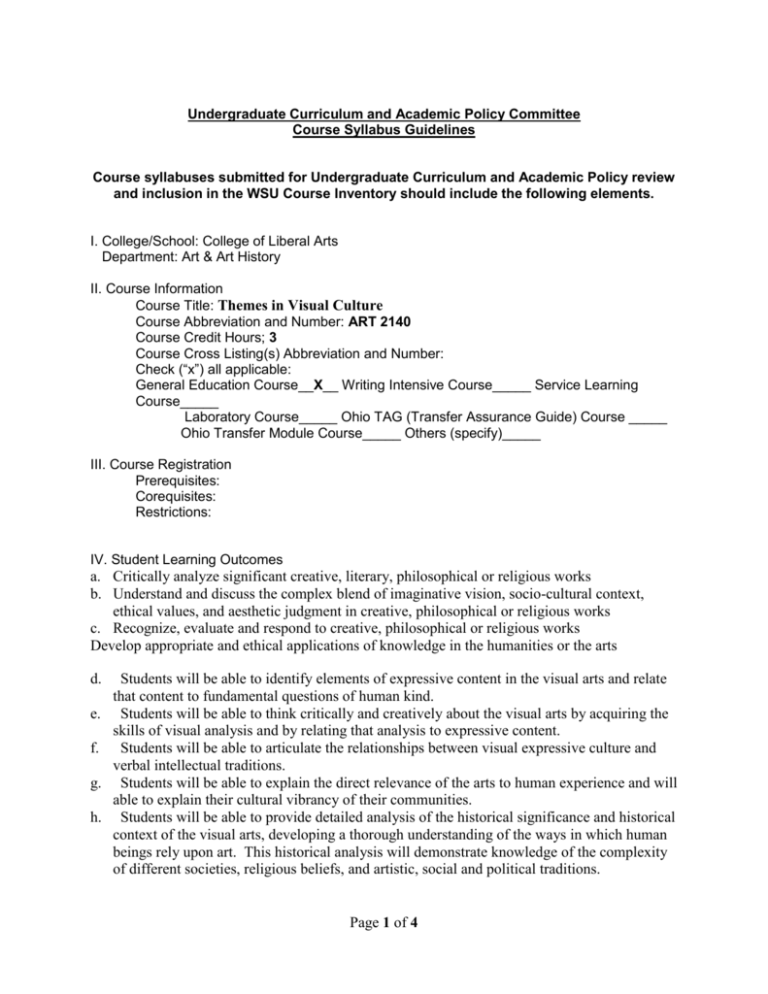
Undergraduate Curriculum and Academic Policy Committee Course Syllabus Guidelines Course syllabuses submitted for Undergraduate Curriculum and Academic Policy review and inclusion in the WSU Course Inventory should include the following elements. I. College/School: College of Liberal Arts Department: Art & Art History II. Course Information Course Title: Themes in Visual Culture Course Abbreviation and Number: ART 2140 Course Credit Hours; 3 Course Cross Listing(s) Abbreviation and Number: Check (“x”) all applicable: General Education Course__X__ Writing Intensive Course_____ Service Learning Course_____ Laboratory Course_____ Ohio TAG (Transfer Assurance Guide) Course _____ Ohio Transfer Module Course_____ Others (specify)_____ III. Course Registration Prerequisites: Corequisites: Restrictions: IV. Student Learning Outcomes a. Critically analyze significant creative, literary, philosophical or religious works b. Understand and discuss the complex blend of imaginative vision, socio-cultural context, ethical values, and aesthetic judgment in creative, philosophical or religious works c. Recognize, evaluate and respond to creative, philosophical or religious works Develop appropriate and ethical applications of knowledge in the humanities or the arts d. e. f. g. h. Students will be able to identify elements of expressive content in the visual arts and relate that content to fundamental questions of human kind. Students will be able to think critically and creatively about the visual arts by acquiring the skills of visual analysis and by relating that analysis to expressive content. Students will be able to articulate the relationships between visual expressive culture and verbal intellectual traditions. Students will be able to explain the direct relevance of the arts to human experience and will able to explain their cultural vibrancy of their communities. Students will be able to provide detailed analysis of the historical significance and historical context of the visual arts, developing a thorough understanding of the ways in which human beings rely upon art. This historical analysis will demonstrate knowledge of the complexity of different societies, religious beliefs, and artistic, social and political traditions. Page 1 of 4 f. Students will be able to demonstrate an integration of knowledge from diverse cultural realms and disciplinary fields (including social science, business, and professional areas) as they apply knowledge in the evaluation and interpretation of art. . V. Suggested Course Materials (required and recommended) Required Text: Margaret Lazzari and Dona Schlesier, Exploring Art: A Global, Thematic Approach (3rd edition), Thomson Wadsworth. VI. Suggested Method of Instruction Lecture VII. Suggested Evaluation and Policy Students will be evaluated on the following: A mid-term exam, consisting of multiple choice and essay questions. A final exam of similar structure, including a visual analysis based on slides. An assignment which will involve the study of original works of art in an area museum. Exams will cover readings, class lectures, video presentation, and visual analysis based on slides. VIII. Suggested Grading Policy Grading A B C D F 90%-100% 89%-80% 79%-70% 69%-60% 59% and below Quiz Mid-term Museum project Final exam University gallery exhibits Attendance Other tasks 50 points 120 points 100 points 140 points 20 points 20 points for extra credit IX. Suggested Assignments and Course Outline COURSE SCHEDULE WEEK THEME READING Week 1 What is Art? A Human Phenomenon Exploring Art, Ch. 1 Week 2 The Language of Art and Architecture Exploring Art, Ch. 2 Week 3 The Media of Art Exploring Art, Ch. 3 Week 4 Deriving Meaning Exploring Art, Ch. 4 Page 2 of 4 Week 5 Who Makes Art? Quiz Exploring Art, Ch. 5 Week 6 What Do We Do With Art? Exploring Art, Ch. 6 Week 7 Why Do We Make Art? Food and Shelter Midterm Exam Exploring Art, Ch. 7 Week 8 Why Do We Make Art? Reproduction and Sexuality Exploring Art, Ch. 8 Week 9 The State Power Politics and Glory Exploring Art, Ch. 11 Week 10 Power Politics and Glory Social Protest/Affirmation Museum Project Due Exploring Art, Ch. 12 Week 11 Mortality and immortality Or Religon Sacred Architecture Exploring Art, Ch. 10 Week 12 Self and Society The Body University Gallery Project Due Exploring Art, Ch. 13 Week 13 Self and Society Race, Gender, Clan, and Class Exploring Art, Ch. 14 Week 14 Nature, Knowledge, and Technology Exploring Art, Ch. 15 Final Exam During Schedule Exam Week X. Other Information Approved: Undergraduate Curriculum and Academic Policy Committee ________________________ Page 3 of 4 Faculty Senate ____________________________________________________________ Page 4 of 4
